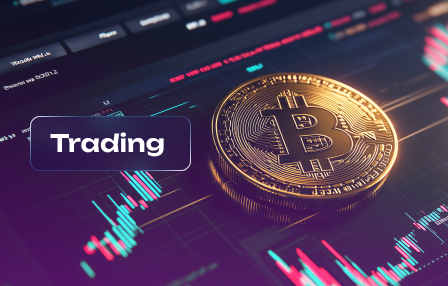What is tokenomics and why it matters
June 15, 2025
To maximize the value of cryptocurrency investments, a solid grasp of tokenomics is essential. Tokenomics, which encompasses the economics surrounding tokens, influences both supply and demand dynamics within the market. Stakeholders must analyze factors such as utility, incentives, and distribution models to make informed decisions.
Token utility plays a pivotal role in establishing its demand. A well-designed token provides tangible benefits that enhance user experience or facilitate transactions within a specific ecosystem. This creates a direct correlation between the token’s utility and its perceived value among users.
Additionally, understanding the incentives behind token distribution can provide insights into potential price movements. When stakeholders are rewarded for holding or using tokens–through mechanisms like staking or governance participation–this can drive demand and positively affect supply metrics. Analyzing these components allows investors to predict market behaviors more accurately and align their strategies accordingly.
Token Supply Models Explained
Understanding token supply models is essential for evaluating a cryptocurrency’s market potential. Primarily, there are three main models: fixed supply, inflationary, and deflationary. Each model impacts distribution, utility, and incentives for stakeholders differently.
A fixed supply model limits the total number of tokens that can ever exist. Bitcoin exemplifies this with its cap of 21 million coins. Such scarcity can drive demand as users perceive value in limited availability. Investors may find these tokens appealing due to predictable economics.
Inflationary models allow for continuous creation of new tokens over time. This approach can incentivize participation by rewarding stakeholders who contribute to network security or governance. However, if not managed properly, inflation can dilute existing token value, leading to decreased demand.
Deflationary models introduce mechanisms that reduce supply over time, such as token burns or buybacks. These actions can enhance scarcity and potentially increase value as demand grows relative to the diminishing supply. Stakeholders are often motivated to hold onto their tokens during periods of deflationary pressure.
Each model presents unique economic dynamics that influence investor behavior and overall market performance. Evaluating these factors helps stakeholders make informed decisions regarding their cryptocurrency investments and strategies.
Utility Tokens vs Security Tokens
Utility tokens serve specific functions within a blockchain ecosystem, enabling holders to access services or products. Their value often correlates with demand driven by the utility they provide. Stakeholders typically use these tokens to pay for transaction fees, access features, or participate in governance.
In contrast, security tokens represent ownership in an underlying asset and are subject to regulatory scrutiny. They embody financial rights like dividends or profit-sharing, making them appealing to investors seeking income streams. The distribution of security tokens is usually tied to compliance with securities laws, impacting their supply and market entry strategies.
Understanding the differences informs investment decisions. Utility tokens may offer high volatility due to speculative interest, while security tokens generally provide a more stable value proposition linked to asset performance. Evaluating incentives is crucial–investors must assess whether their interests align with the token’s purpose before committing capital.
Ultimately, both types of tokens play significant roles in the cryptocurrency market but cater to different investor profiles and risk appetites. A clear grasp of these distinctions enhances strategic decision-making for stakeholders aiming to optimize their portfolios.
Market Impact of Tokenomics
The design of tokenomics significantly influences market dynamics, primarily through supply and demand mechanics. Stakeholders must understand how a cryptocurrency’s supply model affects its value. A well-structured token distribution plan can create incentives for early adopters while ensuring long-term sustainability.
Utility tokens, which provide access to specific features or services, often see increased demand as their usability expands within a platform. Conversely, security tokens are influenced more heavily by regulatory factors and investor sentiment. The perceived value of these tokens can fluctuate based on market speculation and the underlying asset’s performance.
The mechanisms governing token supply–whether fixed, inflationary, or deflationary–play a critical role in shaping market responses. For example, limited supply can drive up demand, leading to price surges during bullish trends. Stakeholders should monitor such models closely to make informed investment decisions.
Incentives embedded in tokenomics also affect user behavior and overall market activity. Incentivizing staking or holding can lead to reduced circulating supply, further increasing scarcity and potentially boosting prices. Understanding these elements allows investors to better predict market movements and capitalize on opportunities.
Ultimately, grasping the intricacies of tokenomics enables stakeholders to navigate the complexities of the cryptocurrency market effectively. With a solid foundation in these principles, investors can better assess risks and identify projects with strong potential for growth.
Analyzing Token Distribution Strategies
Establishing an effective token distribution strategy is critical for optimizing demand and ensuring long-term value in a cryptocurrency ecosystem. Here are key strategies to consider:
- Fair Launch: Distribute tokens without pre-mines or allocations to insiders. This approach fosters community trust and encourages wider participation.
- Gradual Release: Implement vesting schedules for team and advisor tokens to prevent market flooding. This technique aligns stakeholder incentives with project success over time.
- Staking Rewards: Incentivize holders by offering rewards for staking tokens. This not only increases token utility but also stabilizes supply by reducing circulating tokens.
- Airdrops: Use targeted airdrops to increase adoption and create demand among potential users. Ensure clear criteria for recipients to maximize engagement.
- Liquidity Mining: Encourage liquidity provision on decentralized exchanges by rewarding participants with additional tokens, thus enhancing market depth and accessibility.
An analysis of these strategies reveals that a well-structured distribution model directly influences market perception, stakeholder engagement, and overall economic stability of the token. Prioritizing transparency in the distribution process will further enhance trust within the community, driving value over time.
Monitoring the effects of different distribution methods on market dynamics can provide insights into optimizing future tokenomics decisions. Regular assessment ensures alignment with both current demand trends and the evolving needs of stakeholders.



